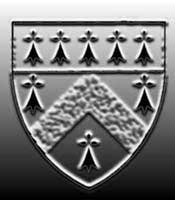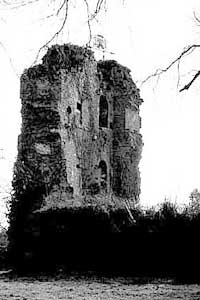

Côtes d'Armor |
Finistère |
Ille et Vilaine |
- Châteaugiron
- Combourg
- Fougères
- Hédé
- Landal
- Montmuran
- Saint Aubin
- Vitré
Morbihan |
Other regions & other castles |
Previous months’ selections |
| Hede Castle |
|
|
A new fortress was built little afterwards in the west of the city, on the top of a high headland which descends à.pic towards North, the West and the South, and from where one enjoys an extremely wide sight: this headland could have been used as castellum Roman. The castle was repaired by the duke Jean II (1286 to 1305), then in 1307, 1399 and of 1443 to 1450. The French seized some without resistance in 1488 after their victory Aubin Saint Cormier. Mercoor made himself main from there in 1597, and Henri IV made it demolish the following year. The base of its vast enclosure and the ruins of its massive keep are the only current remainders of this significant fortified town. The waste ground which extends to the East is the old bayle or external court; it gives access to the door of entry of the castle; it is there that the papegault drew. The door whose jamb exists still today, was provided with a drawbridge. The fortress was preceded on this side of a broad ditch; we saw that it was protected on its three others faces by very escarpées natural defenses. The current enclosure, at nine sides, was rebuilt at the end of the XIV 2nd century by the duke Jean IV; its thickness measures surroundings 2 meters, its interior face preserves 4 meters height and its outside 8 meters; one sees there drain-holes practised afterwards (about 1470-1490 for those appellées "Sparrows") and, on the Northern side a stone staircase which goes down towards outside.
It belonged initially to the lords of this name, and passed by alliance about 1100, in Montfort which still had it in 1168; Henri II of England had it then, Pierre of Brittany gave it in 1265 to his father the duke Jean Ier who links it with the ducal kingdom, it passed then to the royal field after the union of Brittany to France. It was given in prerogative by the duke Arthur II at the beginning of the XIV 2nd century, to its Béatrice daughter of Brittany which married Guy X of Laval, and by the duke François II in second the the XV 2nd century half, successively to its two bastard Antoine and François of Brittany. It was sold by the king Henri II in 1554 to a chevallier François of Breil lord of Hommeaux and was repurchased by the king with died of the purchaser; the crown preserved it until 1789. Paul BANÉAT " Le Département d'Ille & Vilaine " Editions J Larcher - Volume 2 - Rennes - 1928. |
|
Castle of the month : |
Search |
For any question concerning this Web site, send a message to webmaster

 The
town of Hédé was formed, according to the devoted
expression, in the shade of its castle, which is quoted as of the
XI 2nd century. The site of the primitive castle was in the North-East
of the city but in Bazouges-under-Hédé, on Baillage
of Guibarets, with the junction of the roads of Guipel and Combourg;
it bore the name of the Mound-Jouhan. It was taken without blow
to férir by the Duke Conan IV with an English troop in 1156
and by Henri II of England in 1168.
The
town of Hédé was formed, according to the devoted
expression, in the shade of its castle, which is quoted as of the
XI 2nd century. The site of the primitive castle was in the North-East
of the city but in Bazouges-under-Hédé, on Baillage
of Guibarets, with the junction of the roads of Guipel and Combourg;
it bore the name of the Mound-Jouhan. It was taken without blow
to férir by the Duke Conan IV with an English troop in 1156
and by Henri II of England in 1168.  The
keep (XIIIe century) was square; its foundations do not rise any
more on the Southern, Western and Northern sides, that with a few
meters above ground-level. Only its face Is, in beautiful granite
apparatus, preserved 20 meters height with 4 meters approximately
thickness. The principal entry was bored on its Western face at
the level of the first stage, and communicated with the court by
means of a staircase; a postern opened, moreover at the base of
the Southern face. Châtellenie de Hédé had a
right of high justice and included/understood ten parishes.
The
keep (XIIIe century) was square; its foundations do not rise any
more on the Southern, Western and Northern sides, that with a few
meters above ground-level. Only its face Is, in beautiful granite
apparatus, preserved 20 meters height with 4 meters approximately
thickness. The principal entry was bored on its Western face at
the level of the first stage, and communicated with the court by
means of a staircase; a postern opened, moreover at the base of
the Southern face. Châtellenie de Hédé had a
right of high justice and included/understood ten parishes. 
